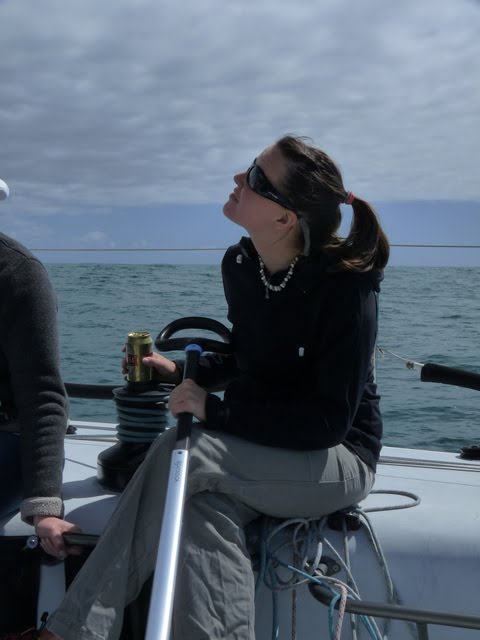
So as our last full weekend in China we really wanted to make the most of it (next weekend we'll be busy packing and getting ready to shove off to South Africa). We have wanted to go and see the Terracotta Army, but have just never been able to find the time to go. I remember my grandma telling me about it when I was a little girl after their trip to China, and not even being able to comprehend what she was talking about. Why would anyone bury a bunch of statues in the ground? Since then she's always had a small replica of a Terracotta warrior in her house, so when we knew we were going to be living in China I've been thinking how cool it would be to go and get our own Terracotta Warrior. It seems like one of those trips you really have to plan for. But we decided to just go over a weekend and kind of cram it in so to speak.
I'm so glad we did.
The sight is completely breathtaking. Even just standing above the first pit, trying to wrap my head around what had transpired here, made me a bit dizzy (it could have been the heat and humidity but I'm pretty sure it wasn't). The Terracotta Army is one of those things that you truly have to see to believe, and even then it doesn't feel real.
A brief rundown: 2000 years ago in around 200BC, the self proclaimed first emperor of China Qin Shi Huang wanted to build an army around his tomb to protect him in the afterlife. There were 4 pits excavated to house the soldiers and cavalry, but only 3 were completed before the construction ended. They dug out large corridors, placed the figures in them and then put large wood planks over the top. On top of the planks they put down mats and then covered those with clay, all to try and preserve the soldiers.
The soldiers themselves were built out of clay, and the bodies are believed to have been built in 3 parts. They also believe that they had 8 different molds for the heads of the soldiers, but clay was then added to them to create individual facial features. Every solider is unique, there are no 2 alike. Different armor, clothing and hairstyles were given depending on the rank of the soldier. After they were made they even went as far as to paint them. This is insane considering in the 1st and largest pit they believe that more than 8,000 soldiers are buried.
All this was underground and unheard of until 1974 when some farmers wanted to add a well to their land, started digging and found this…
My photos don’t even begin to scratch the surface of a truly amazing story. But here they are, enjoy!

On the bus, heading out to the pits!

Trying to get a good close up shot. The lighting in there was just not ideal for photo taking. They asked people to not use their flash. I took over 100 photos, but most came out blurry or too dark.

Pit #1, the largest of the three.

Dedicated soldiers

Pieces that still need to be put back together. Why does Humpty Dumpty come to mind?

So many.

Overwhelming.

This is where the statues are brought when they are pulled out of the pit to be reconstructed.

Being put back together.

Horses






This was in the 3rd pit which is believed to be the officer’s quarters. This was where all the logistics of battle were to take place in the afterlife.


So much still to do.
As for the rest of Xi An…
A really interesting city with a lot of culture and places to see. One of the few cities left that still has a wall surrounding it.

The Bell Tower.

Eliot

Kites in the sky.

The drum tower.



Sweets at the market.

The Market

Huge fountain show that goes along to music. Completely puts Hangzhou’s West Lake fountain show to shame.

Pagoda.


A fierce lion.



No comments:
Post a Comment